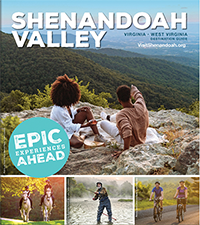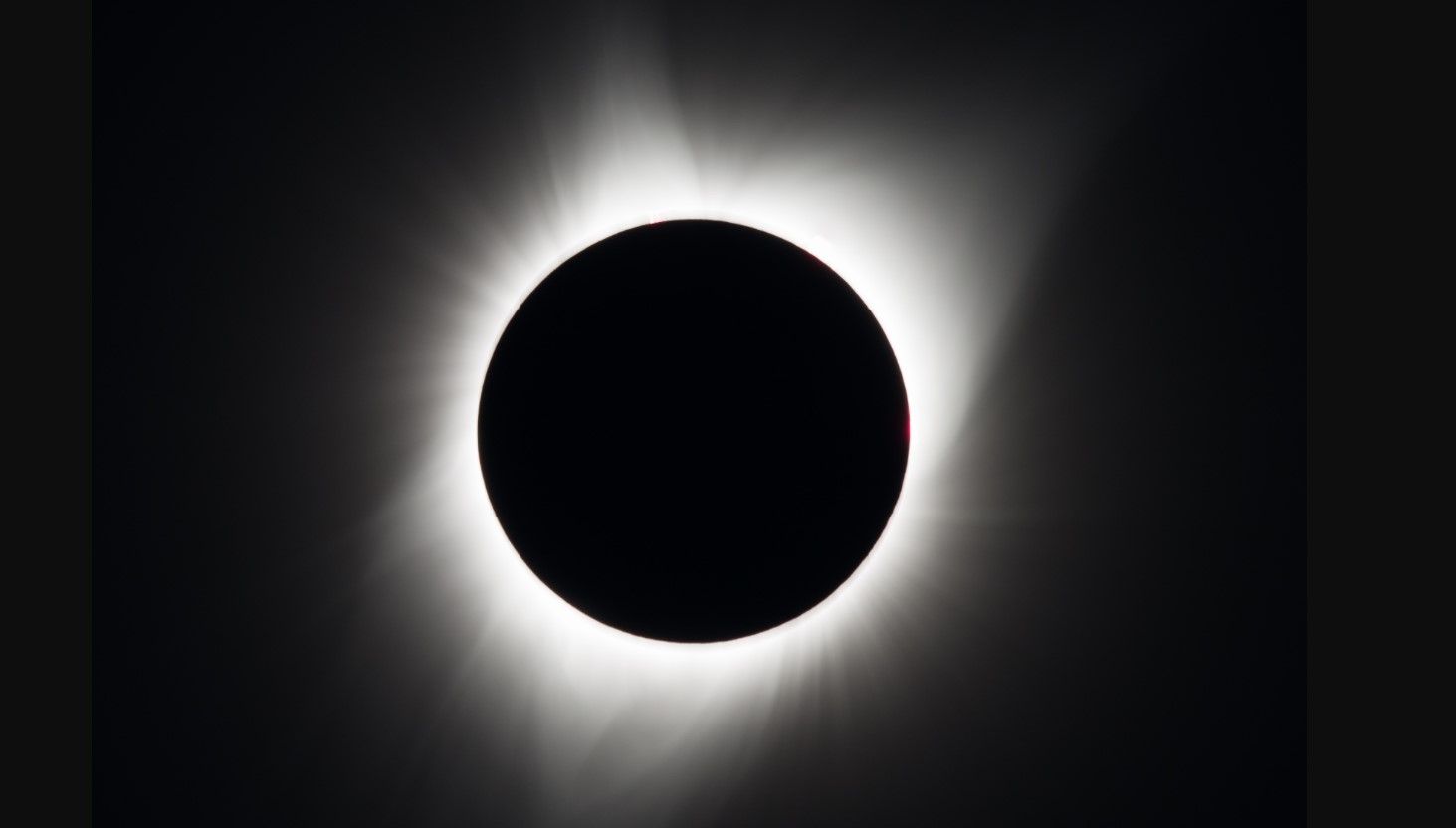An eclipse is considered by many to be one of the most awe inspiring spectacles in all of nature. On August 21st, 2017, for the first time in nearly a century, a total solar eclipse will be visible across North America. And there are great viewing locations right here in Virginia!
At approximately 2:40 pm, viewers in and near Virginia’s Shenandoah National Park will experience 80-85% coverage of the sun. The sky will take on an eerie twilight as the Sun’s bright face is mostly replaced by the black disk of the Moon. Weather permitting, the sky will darken during this time as the moon moves in front of the sun.
If you are near Shenandoah National Park, we encourage you to enter the park and take advantage of SNP’s Ranger-led programs to learn about why a solar eclipse happens, what to expect, and how to view it safely. Rangers will be located at Dickey Ridge Visitor Center (mile 4.6) AND Byrd Visitor Center (mile 51) during the partial eclipse. Remember, the only safe way to look directly at the uneclipsed or partially eclipsed sun is through special-purpose solar filters, such as “eclipse glasses.”
Special Activities at Shenandoah National Park
Shenandoah National Park will celebrate the importance of dark skies and the beautiful night skies that Shenandoah protects with the second-annual Night Sky Festival from Friday, August 18 to Monday, August 21. Join Park Rangers, special speakers, and local volunteer astronomers during four exciting days of talks, walks, audio-visual presentations, and sky viewing throughout the Park. The event will culminate with a viewing of the solar eclipse on Monday, August 21. Featured events include:
- Friday, August 18th at 4:00 pm | James Webb Space Telescope. NASA’s Successor to Hubble Space Telescope. Join NASA Jet Propulsion Laboratory Solar System Ambassador Greg Redfern for this engaging presentation about the 2018 space telescope successor to Hubble Space Telescope. Get up close and personal with the latest pictures and information direct from NASA. Byrd Visitor Center Auditorium (mile 51), 45 minutes.
- Saturday, August 19th at 5:00 pm | Evening Ranger Talk: The Last Frontier. We have come a long way since John Lederer became the first European to document his discoveries west of the Blue Ridge Mountains. Today we set our eyes on space. Come learn about recent discoveries and how we can all play a role in protecting our night skies. Dickey Ridge Visitor Center auditorium (mile 4.6), 45 minutes
- Saturday, August 19th at 8:30 pm | Big Meadows Evening Program: The Lives of Stars. Join NASA Jet Propulsion Laboratory Solar System Ambassador Greg Redfern for this engaging presentation about how the stars, including our Sun, shine. Explore how stars are born, live, and ultimately, die. You’ll never look at the stars the same after you learn their secrets. Dress for cool mountain nights. Big Meadows Amphitheater, in the picnic grounds (mile 51), 45 minutes, [Rain location: Byrd Visitor Center, mile 51]
- Sunday, August 20th at 8:30 pm | Big Meadows Evening Program: Stories in the Stars. Discover the value of preserving dark skies as you take a constellation tour highlighting stories with some surprising modern connections. Dress for cool mountain nights. Big Meadows Amphitheater, in the picnic grounds (mile 51), 45 minutes
Solar Eclipse Safety Viewing Tips From NASA
- Always inspect your solar filter before use; if scratched or damaged, discard it. Read and follow any instructions printed on or packaged with the filter.
- Always supervise children using solar filters.
- Stand still and cover your eyes with your eclipse glasses or solar viewer before looking up at the bright sun. After looking at the sun, turn away and remove your filter — do not remove it while looking at the sun.
- Do not look at the uneclipsed or partially eclipsed sun through an unfiltered camera, telescope, binoculars, or other optical device.
- Similarly, do not look at the sun through a camera, a telescope, binoculars, or any other optical device while using your eclipse glasses or hand-held solar viewer — the concentrated solar rays will damage the filter and enter your eye(s), causing serious injury.
- Seek expert advice from an astronomer before using a solar filter with a camera, a telescope, binoculars, or any other optical device. Note that solar filters must be attached to the front of any telescope, binoculars, camera lens, or other optics.
- If you are within the path of totality, remove your solar filter only when the moon completely covers the sun’s bright face and it suddenly gets quite dark. Experience totality, then, as soon as the bright sun begins to reappear, replace your solar viewer to look at the remaining partial phases.
- Outside the path of totality, you must always use a safe solar filter to view the sun directly.
- If you normally wear eyeglasses, keep them on. Put your eclipse glasses on over them, or hold your handheld viewer in front of them.
Love Stargazing from the Dark Skies of the Shenandoah Valley?
- Blue Ridge Astronomy Club – Lynchburg, Virginia
- Roanoke Valley Astronomical Society – Roanoke, Virginia
- Star City Astronomy Network – Roanoke, Virginia
- Shenandoah Valley Stargazers – Harrisonburg, Virginia





